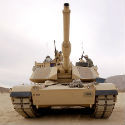
The US Department of Defense (DoD) – the federal agency managing the country's armed forces – announced another group of sites where it will test 5G technology. The announcement brings the total number of DoD bases selected to host 5G testing to 12.
"5G technology is vital to maintaining America's military and economic advantages," the agency wrote in a release.
The DoD said it will test a variety of 5G technologies, including augmented reality support for maintenance and training, 5G core security experimentation, and spectrum sharing. The agency named six new military bases where it will conduct tests – ranging from Tinker Air Force Base in Oklahoma to Camp Pendleton in California – that will join the other bases it previously announced would host 5G tests.
Importantly, Joseph Evans, the agency's technical director for 5G, said during a press conference that the DoD has already received applications from vendors for its previously announced testing locations. He said the agency would likely issue those contracts later this summer.
While he didn't name any possible vendors, likely options range from Ericsson to Nokia to Mavenir to Parallel Wireless.
Evans added that the DoD's second round of testing locations, announced this week, could be put into action as early as this year.
The DOD also recently released the details of its overall 5G strategy. The agency's goals include advancing "US and partner 5G capabilities," promoting "awareness of 5G risks to national security," and developing "approaches to protect 5G infrastructure and technologies."
Interestingly, one of the DoD's stated goals is to research "open architecture and virtualization."
"The DoD experimentation program will also inform more-secure designs for 5G core and edge systems, including Open Radio Access Networks and network slicing," the agency wrote. "The resulting open architectures, as well as virtualized networks and services, will make it easier for companies to offer 5G services, thereby spurring innovation, competition, and acquisition options. The approach will also enhance security, by providing a broader community of stakeholders that are dedicated to ensuring the overall integrity of the resulting architectures."
The inclusion of "Open Radio Access Networks" is important considering there is a concerted effort within the Trump administration to leverage open RAN technology to bolster US companies in 5G and create a block against China's Huawei.
Indeed, when asked about the US military's position in 5G relative to China, Evans said: "I think we're competitive in this space."
"We do not think that we're behind in any sense here," he added.
As Light Reading previously reported, the DoD's interest in 5G kicked off in earnest last year with the appointment of Evans to head up 5G at the DoD. Previously he worked with the DoD's Defense Advanced Research Projects Agency (DARPA). He reports to the agency's deputy undersecretary of defense for research and engineering, Lisa Porter.
— Mike Dano, Editorial Director, 5G & Mobile Strategies, Light Reading | @mikeddano
Read more about:
AsiaAbout the Author(s)
You May Also Like




_International_Software_Products.jpeg?width=300&auto=webp&quality=80&disable=upscale)







